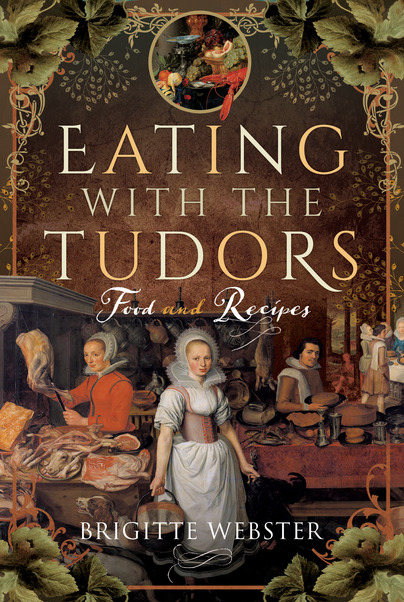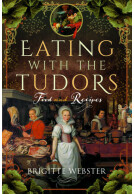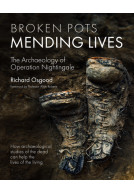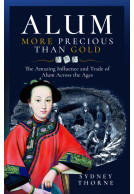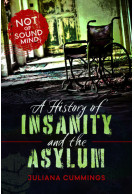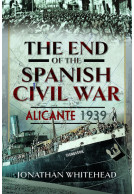Eating with the Tudors (Hardback)
Food and Recipes
Imprint: Pen & Sword History
Pages: 256
Illustrations: 100 mono integrated
ISBN: 9781399092593
Published: 11th July 2023
Last Released: 16th May 2025
(click here for international delivery rates)
Need a currency converter? Check XE.com for live rates
| Other formats available | Price |
|---|---|
| Eating with the Tudors Paperback Add to Basket | £15.99 |
| Eating with the Tudors eBook (83.7 MB) Add to Basket | £6.99 |
Eating with the Tudors is an extensive collection of authentic Tudor recipes that tell the story of a dramatically changing world in sixteenth-century England. This book highlights how religion, reformation and politics influenced what was served on a Tudor’s dining table from the very beginning of Henry VII’s reign to the final days of Elizabeth I’s rule.
Discover interesting little food snippets from Tudor society, carefully researched from household account books, manuscripts, letters, wills, diaries and varied works by Tudor physicians, herbalists and chronologists. Find out about the Tudor’s obsession with food and uncover which key ingredients were the most popular choice. Rediscover old Tudor favourites that once again are being celebrated in trendy restaurants and learn about the new, exotic food that excited and those foods that failed to meet the Elizabethan expectations.
Eating with the Tudors explains the whole concept of what a healthy balanced meal meant to the people of Tudor England and the significance and symbology of certain food and its availability throughout the year. Gain an insight into the world of Tudor food, its role to establish class, belonging and status and be tempted to re-create some iconic Tudor flavours and experience for yourself the many varied and delicious seasonal tastes that Tudor dishes have to offer. Spice up your culinary habits and step back in time to recreate a true Tudor feast by impressing your guests the Tudor way or prepare a New Year’s culinary gift fit for a Tudor monarch.
"An extensive collection of authentic Tudor recipes that tell the story of a dramatically changing world in sixteenth-century England."
Medieval History
Read More Here
Rating: 5 out of 5 stars
NetGalley, Thalia Hernandez
As someone who watches historical cooking shows for fun, this book was so interesting. I'm not sure if I would care for many of these dishes, but it was fascinating to see history through food. This book was well researched, well written, and entertaining.
This book contained so many fascinating historical facts. It is clearly evident that the author is not only passionate about the topic but is also extremely knowledgeable.
NetGalley, L Call
4 out of 5
Army Rumour Service (ARRSE)
This is a wonderful publication and I'm looking forward trying out some of the recipes.
Read the Full Review Here
Illustrated throughout with B/W photography, "Eating with the Tudors: Food and Recipes" is a unique, elegant, fascinating, informative combination of culinary history and historical 16th & 17th Century British recipes that served the royal courts of Henry VIII and Elizabeth I. A pleasure to browse through, ideal for recreating elegantly historical menus, "Eating with the Tudors: Food and Recipes" is a very special and recommended addition to personal, professional, community, and academic library cookbook collections and supplemental Tudor History curriculum studies lists.
Midwest Book Review
Read the full review here
Article: A Taste for the Tudors
Norfolk
Rating: 5 out of 5 stars
NetGalley, Aisha Bari
Definitely would recommend this. The author has put together a very beautiful collection of Tudor dishes with recipes.
Rating: 5 out of 5 stars
NetGalley, April Gray
Wow, what a fun and interesting read! I really enjoyed this book, it's fun to learn about everyday life in other times and/or other cultures, and there are so many recipes I want to try! I would recommend this to anyone who has even a passing interest in the Tudor period (obviously), British history, and culinary history. I enjoyed Webster's writing style, and she obviously knows her stuff. What took this down a bit for me was an understandable decision on Webster's part to assume that the reader is a very experienced cook, just as the cookbooks published in the 16th century assumed their readers knew just what to do and only needed a little bit of instruction.
Seriously, though, I highly recommend this, it's a very interesting read even if you have no intention of trying the recipes, though I'd bet you'll find several you want to try by the time you reach the end. I can't wait to get started!
Serious foodie historians will adore this engaging and well-written history of food in Tudor times. There’s an interesting overlay with 20th/21st century nutrition with Tudor food preparation and consumption, paired with a fascinating look at who ate what and when. I had no idea the Catholic Church controlled so much of what, when, and how people ate. The restrictions associated with all the holy days were just mind-boggling!
NetGalley, Patricia Uttaro
Recommended for large library collections and serious foodies.
Eating with the Tudors is an essential guide for anyone interested in the rich world of Tudor cuisine and early modern dining practices.
Bethan Davies
In Webster’s comprehensive introduction, she explores food’s pivotal role in Tudor conceptions of health, and emphasises that rituals of food consumption is both constitutive and reflective of individual and communal identities in the Tudor period. The main body of the book is a testament to Webster’s historical, practical, and embodied knowledge of Tudor recipe culture. Drawing from a staggering range of Tudor texts, including printed and manuscript recipes, household accounts, herbals, household accounts, and wills, Webster has created a rich treasury of early modern cookery practices. Each recipe entry contains both an original Tudor recipe, the historical context of its ingredients and its creation, along with a picture of each dish, and a modernised text version for the reader of today to use. As Webster herself recognises in her preface, this format represents a unique new approach to Tudor cookery. Webster is ever mindful of the reader’s experience of encountering a Tudor recipe, providing a concise history of early modern recipes in manuscript and print form, as well as assuring the reader that the enigmatic nature of Tudor recipes is part of their alluring and often surprising charm.
The opening chapters are organised by season, in a fitting recognition of the importance of seasonality in Tudor cookery. Spring, a period of religious fasting, is the time for stewed pottage; summer is the moment for conserving ripening strawberries, ready for the winter ahead. Autumn is the time for the Tudor equivalent of a sweet crumble, packed with pears, quinces, and wardens (apples). Winter calls for the foods of festive celebration: roasted quails and pheasants, mince pies, and, quite magically, a recipe to make a dish of white snow. As a scholar researching sugar in Tudor times, I was delighted to see her fifth and final chapter dedicated to banqueting food. A banquet was an elite dining ritual akin to our modern dessert, containing amazing feasts comprised mainly of sugar and spices. Attended only by invitation, and taking place in a special banqueting house reserved for this culinary display, it was an expression of wealth and power; the foods of overseas trade, purchased at a dear cost, could only be afforded by the highest echelons of society. I’ve just made Webster’s recipe for jumbals, a luxury Tudor biscuit shaped like a miniature pretzel, which would often be served at sugar banquets. Webster’s instructions were seamless to follow, and while my jumbals did not look as beautiful as hers, the picture was an invaluable aid in my recipe experiments. I can’t wait to try out more of the recipes.
Eating with the Tudors is a valuable new addition to the ever-growing field of food history and recipe reconstruction. Go and get your copy now!
What an interesting book! I've always been a fan of books that explore cooking in TV shows/books from other eras, and now this appetizing work that focuses on cooking during the time of Shakespeare. I found the history illuminating, it was well laid out, and the recipes are ones I will try for fun with my kids at home. Thank you for giving me the chance to read and review this awesome book.
NetGalley, Ariel Yang
I whole-heartedly recommend this book, both if you enjoy trying unusual recipes (although perhaps not if you’re a vegetarian like me!) and if you want to get a sense of how the modern world was born.
NetGalley, Colin Edwards
As would be expected of Brigitte Webster the book is well researched and contains a narrative around both the origin of the foods, their consumption and how they were regarded by the Tudors. There are references to foods that were identified as being of both high and low status. Also Brigitte refers to the humoral aspects of foods and how these tie in with the seasons of the year.
Julian and Valerie Rutherford
Looking at the recipes, these are divided into the seasons associated with them and the conditions that prevailed affecting foods that were available and what may or may not be consumed. Lent falls in the spring and the restrictions during this period of ‘fasting and abstinence’ are described as well as referencing ‘fish days’ that may have been anything from the regular Friday fish only to the various saints days and sometimes their eves also.
The recipes themselves are structured in an accessible way; the original text – here Brigitte refers exclusively to primary sources either in her own possession or available on line with a bibliography at the end of the book that would allow the reader to carry out their own research in an area that they may find of interest. This is followed by a modern rendition of the recipe and any other associated or additional information that is relevant to the recipe concerned.
Some of the recipes seem a little strange to the modern palate but others represent potentially tasty staple dishes that could well be adopted as part of today’s family diet.
In conclusion, the book will be a valuable addition to the bookcase of anyone who is interested in the history of food and/or the Tudor period.
The first thing I noticed and enjoyed with Brigitte Webster’s new book Eating with the Tudors is the way the book is divided into seasons. I can see a great deal of broad research has been done into the customs of the time. This places the reader in to that atmosphere of church and state. There are fascinating insights into such things as the introduction of butter on bread in English culinary traditions, that we all take for granted these days if we have an English background.
Alida Hazelgrove
I was delighted when I arrived at the first recipe and it’s stunning accompanying image. Food photography can be challenging as I know, having worked in a professional London photography laboratory. Throughout the book the recipes are displayed and dressed to perfection.
Summer and the arrival of picnics makes wonderful sense of the importance of the renaissance garden and the placement of banqueting houses. A picture of food in Tudor culture is beautifully illustrated in the accompanying notes to the recipes. The pigeon recipes bring to mind the popularity of dedicated dovecotes accompanying Tudor Manors and monastery farms. Today pigeons do not have such a pleasant reputation as they did in Tudor times.
For me the highlight of the book is food history during Tudor times. As a medieval re enactor I cook Tudor recipes at home all the time because I have a fondness for its sweet and savory combinations. Until this book I have to admit I have never done any research behind the recipes I use.
This book will be going on my bookshelf!
Rating: 5 out of 5 stars
NetGalley, Brynna Hooper
This cookbook is such a unique and one of a kind find. The modernized recipes are great, we all expected those, but the original recipes and added research and explanation for each one is spectacular! I love collecting cookbooks and this one is going on my shelves and my sister's (she is a fanatic for the Tudors!). There is a recipe in here for everyone! I highly recommend this cookbook!
This book is well presented and includes original recipes in the original English. The same recipes are also modernized. It includes photos and history of food, dining, and cooking traditions during the Tudor period. This is a great reference for anyone interested in English history and customs.
NetGalley, Claudia Ratay
Very well researched.
Rating: 5 out of 5 stars
NetGalley, Kimberly Pawlowski
“Eating with the Tudors” blew me away! I was expecting just a cookbook of modernized recipes from 16th century England (which was enough to spark my interest to get my hands on a copy), but the author did some extensive research to skillfully explain why certain foods were being served during the Tudor era and why it mattered during those times.
I was fascinated by the Tudors’ emphasis on “humoral qualities” of meals – meaning that food was seen as medicine to address particular imbalances. Learning about their concept of a balanced meal and the significance of eating seasonal food is still a relevant concept that we still follow in modern times.
I really enjoyed seeing the original of each recipe followed by the author’s modern take (along with photos!). Some recipes were out of the question for my family’s tastes, but the more recognizable recipes for pancakes, fritters, peace biscuits, and baked pippins (apples) all looked and sounded delicious! I’m excited to try several of these recipes in the upcoming weeks.
I highly recommend this book to anyone interested in the recipes and history of food during the Tudor era. You won’t be disappointed!
Rating: 5 out of 5 stars
NetGalley, Jeanne Schutts
This was a very interesting book. It explained how certain foods were for the lower class, like onions, and other for the upper class, and why foods were prepared the way they were. What was considered a healthy, balanced diet in Tudor England is very different from today. Boiling fish in a pound of butter is a bit much. I like seeing the original recipes and the modern version.
Rating: 5 out of 5 stars
NetGalley, Anna Maria Giacomasso
I love social history books and this one is excellent as it talks about how people of all classes ate and how they were affected by religious or health factors.
The recipes are an interesting bonus and I want to find some of them
Highly recommended.
Rating: 5 out of 5 stars
NetGalley, LOIS ELIYAHU
A comprehensive guide from the nobility to the poor. Everyday diet, health concerns, church matters and the seasons, all played a part in what people ate. There are lots of fascinating recipes from the delicious spinach fritters to the not so appealing tansey cake.
Food was a huge part of life then, as it is now. I enjoyed this book immensely.
Webster’s clear familiarity with the topic and her ability to provide clear, cohesive, and relevant contextual information for the food and individual recipes makes this book a fascinating and educational, yet accessible, read.
NetGalley, Lily Amidon
This is a really neat book for people that are into the Tudor era or interested in history or food history. The recipes are modernized so you can make them, but without sacrificing the integrity or the original recipes. I really enjoyed looking through it and wouldn't mind trying a few of the recipes!
NetGalley, Cristi Marashi
Eating with the Tudors is an extensive collection of authentic Tudor recipes that showcases the influence of religion, reformation, and politics on the dining tables of sixteenth-century England. Brigitte Webster skillfully weaves together a narrative that chronicles the changing world during Henry VII’s reign through Elizabeth I’s rule.
NetGalley, The Sassy Bookworm
This book provides fascinating insights into Tudor society through meticulously researched household account books, manuscripts, letters, wills, diaries, and works by Tudor physicians, herbalists, and chronologists. Readers will discover the Tudors’ food obsession and explore the most popular ingredients of the time. The author also delves into both beloved classics, making a comeback in trendy restaurants and exotic foods that piqued Elizabethan curiosity but fell short of expectations.
Eating with the Tudors goes beyond recipes to explain the concept of a healthy balanced meal in Tudor England. It explores the significance of certain foods and their availability throughout the year, shedding light on how food played a role in establishing class, belonging, and status. With this book as a guide, readers are tempted to recreate iconic Tudor flavors and indulge in the diverse seasonal tastes that Tudor dishes offer. Whether impressing guests with a grand Tudor feast or preparing a New Year’s culinary gift fit for royalty, this book provides all the inspiration needed.
As someone who adores books about food history and enjoys trying out new recipes, eating with the Tudors was a perfect fit for me. This well-structured book presents interesting historical information alongside easy-to-read and follow recipes from Tudor times. Divided into five sections - Spring, Summer, Fall Winter, and Banqueting Food - it offers a comprehensive exploration of Tudor cuisine.
This definitely explained many food related references in my Tudor reading. It was organised with the recipes first and then by the season with the history of the dish at the end. I thought it was well thought out, researched and highly interesting. I enjoyed how the author gave the Tudor version as well as the modern version of each recipe. It is very meat heavy as one would expect but there are some which could be made vegetarian. Also included are culinary delights made for and given to the Tudors themselves during the holidays. A fun read for a lover of the period.
NetGalley, Leslie Hall
Rating: 5 out of 5 stars
NetGalley, Mae Bowen
Really neat, we enjoy reading about these historical recipes and recreating them! It’s impressive to see so many recipes just from one era of history.
Rating: 5 out of 5 stars
NetGalley, Michelle Smith
Food history love is real and it's definitely a major interest of mine. I wanted very much to read this from the moment I read the title and was so glad for the opportunity to do so. Spoiler: it was even better than I had hoped for.
Reading over a gray and rainy summer weekend and just completely fascinated with all the research that Ms Webster obviously put into this title. The author is very knowledgeable and shares that in this treasure of a book.
The history, old recipes, and modernized recipes are made all the more intriguing by the photos accompanying the offerings. I really enjoyed learning how everyday people ate in addition to royalty.
Excellent excellent book. Definitely worthy of a spot on the bookshelf of any food history lovers or Tudor era buff.
Rating: 5 out of 5 stars
NetGalley, Danielle Ellis
A truly fascinating book. A real passion project from the author. Within, you'll find Tudor recipes carefully tested and presented in a form that we can use today. Luckily the author has omitted some ingredients we now know to be poisonous. They had a different take on what was a good diet and which ingredients were suitable for the poor - onions for example.
I particularly enjoyed reading the original recipes with in some cases some very inventive spelling. Definitely a book for your shelf to dip into frequently.
Rating: 5 out of 5 stars
NetGalley, Bethany Swafford
Explore the world of sixteenth-century England through authentic Tudor recipes. From Henry VII to Elizabeth I, discover intriguing food facts sourced from historical records, diaries, and works by Tudor physicians and herbalists. Uncover popular ingredients, forgotten favorites, and new exotic flavors that thrilled or disappointed Elizabethans. Learn about balanced meals, food symbolism, and seasonal availability. Immerse yourself in the world of Tudor cuisine, recreate iconic flavors, and impress guests with a true Tudor feast or a regal New Year's gift.
Though I can’t say that I’ve ever been especially interested in cooking from the past, this book caught my attention as soon as I saw it. How much had the art of cooking changed through the years. I can’t say I really grasped the concept of humors and which food was good for which humor, but it was interesting to read. I also enjoyed the Tudor spelling of the time, trying to guess what they meant.
Some of the food had a strange combination to me, as a twenty-first century reader. I’m not sure I’m brave enough to try recreating the recipes for my family, though I might attempt a pie at some point. Props to the author for working out the modern day equivalent to the original recipes!
I would recommend this to readers who have an interest in the history of cooking.
As someone interested in food history I found this a really interesting book. Author Brigitte Webster has not only done her research, she's cooked the recipes she shares here, making for a really interesting combination of food history and cookbook. The book is divided into seasons, a great way to remind the reader that, while today we take for granted how food will be available year-round, the Tudors had to focus on the availability of foods and prepare for poor harvests and preserving foods for winter. Webster examines different experts and what they think about various foods (interestingly not all of them agree on what is good for you or not!), explains why most often fresh fruit is considered dangerous and how to fix that, and how the expansion of England's trade routes and then colonies in the Americas changed the types of foods that became available over time. At the end of each section are recipes that would have been used during that season- first in the original and then Webster's 'modern' version for those who want to try and make the recipe more easily. Afterward there is an "additional information" section that I found interesting with extra tidbits pertaining to foods relating to that recipe- like turkey, marmalade, etc.
NetGalley, Anne Morgan
Webster's research is well-done and the book shows her clear fascination with the subject and her desire to pass on her knowledge to others. While occasionally repetitive, overall the book is well-written, accessible to both history lovers and those just stepping into the world of food history for the first time.
Rating: 5 out of 5 stars
NetGalley, Meg Gajda
It's one of a kind of book about food during the era of the Tudors with..... receipts and illustrations!!!!! An amazingly well-researched and well-written compendium on the topic. The book is divided into four seasons with the description of food available in each of them. All the recipes are modernised and ready to recreate. My favorite recipe so far is 'Spinage (Spinach) Fritters' from 1588.
It's a rare gem among other book on the Tudors.
Rating: 5 out of 5 stars
NetGalley, Traci Hoffman
With fascinating facts about diets during the Tudor era and countless recipes, Brigitte Webster transports us to the Tudor era and she takes us on a culinary journey.
Some Tudor enthusiasts (myself included) often get lost learning about the fascinating people of the era that we regretfully overlook the aspects of their domestic every day lives. Webster reminds us that their everyday lives are just as important.
Most Tudor diets were based on the Four Humor Theory, and I enjoyed reading about what physicians had to say about diets and what they felt was good for a person to eat.
The book was broken up by the four seasons, and lastly a section on banquets. This was a wonderful way to break up the book. Someone could find a recipe for summer more easily that way. I also enjoyed learning facts about various foods and what they were used for in the era (1485-1603).
I was struck by how many primary sources used and also how recipes were converted from their original state to a modern recipe we could use today. My favorite parts of the book were the use of different meats throughout the period and their significance. One of my favorite Tudor artifacts is a small box for sweet meats that Elizabeth I gave to Lord Robert Dudley. I know can know even more about the sweet meats and what it meant.
I thank Pen and Sword Publishing and Netgalley for allowing me to read this book with an ARC. I would recommend this book to anyone who wants to know more about food in Tudor times or wants to try a recipe. The book was definitely a wonderful addition to Tudor topics that haven't been covered as much. 5/5 Stars.
Rating: 5 out of 5 stars
NetGalley, Heather Bennett
Loved this book! A must read if you are interested in either Food History, or the Tudor time period, this book is definitely a keeper!!
Rating: 5 out of 5 stars
NetGalley, Beth Cato
I geek out over food history. This book feels like it was written for me. Webster is an expert on the Tudor era, and breaks down her delicious subject matter by season. She discusses different native and imported foods across the period and frequently cites primary sources, many of which are gifts that were ordered or received (wow, a lot of judges were bribed with fancy foods). The larger portion of each section is devoted to recipes. What sets this book apart in an amazing way is that the original recipes are included, followed by her modern re-creation packed with advice.
The only other current food history book that I've seen do this is Savoring the Past: The French Kitchen and Table from 1300 to 1789, but that one also translated from French to English; most of the recipes in Webster's book are in the original English (complete with creative spelling). I feel like the seasonal organization adds to Webster's work as well, as you get a greater sense of the natural flow of the year and how holidays were celebrated. A section on wassail and its evolution across time, including how a declaration of "toast" came to be involved with drinking, is especially fascinating. Following the seasonal sections is one on the Tudor concept of banquets, which were dessert-focused and came about because of the increasing availability and enjoyment of sugar.
I adored this book. I definitely would have looked to this for inspiration while working on my novel A Thousand Recipes for Revenge. I highly recommend Eating with the Tudors to my fellow food history buffs out there.
Rating: 5 out of 5 stars
NetGalley, Valérie Thirkettle
This is a really fascinating book about food, eating culture, traditions, and recipes from the Tudor times. The author starts with an impressive review of the books and documents she has researched over a period of about 10 years. What a work of love that was ! Covering the period 1485 to 1603, the book is organised by seasons, which definitely fits with the pattern of nature and weather, which was so important at the time.
Spring and lent focus on using the first plants in the year. Medicinal virtues of plants and foods were definitely an important element of Tudor eating. And of course the Easter traditions feature in the recipes. Summer highlights the enjoyment of picnics. Autumn is a busy time of food preservation and conservation to last through the winter. Before icehouses, preservation was by drying and also, in the case of meat, curing and laying in brine. Sugar was used for preserves and conserves and spices held an important place in Tudor kitchen. A Tudor household would not let food go to waste. We also read about potages, a wide range, especially consumed by the common folk, as well as beans, gourds, vaunts (stuffed sweet omelettes). Of course various recipes feature apple and pears. I love the apple moise and the bake of peares, quinces and wardens. Winter food depended very much on whether you were rich or poor. We learn about various Christmas traditions, venison, plum pudding and figgy pudding and, later, turkey. We discover recipes of turkey, duck, pigeons, quail, capon, pheasant, but also mince pies and frumenty. I loved the recipe “A tarte to provoke courage either in man or woman”, made with the sweet potatoes that had recently arrived from Panama. A whole chapter is devoted to banqueting food. Banquets were served as the last part of a meal. Designed to impress, they were usually luxurious and also a more private and intimate setting for eating and socialising. Subtleties and sweetmeats, tarts and jellies, cakes and breads, wafers, comfits and all kinds of sweet delights were served, made possible by the increased availability of sugar in the 16th century.
I did not know anything about Tudor food and this is what made me pick up this book. What a great idea that was! I have really learned a lot. Not just on the food but also the language, thanks to the original recipes that are proposed….together with their version in modern language. A really good book for those who have a combined interest in food and history. And congratulations to the author for this work of reference.
Rating: 5 out of 5 stars
NetGalley, Heidi Malagisi
When we think about food during the Tudor dynasty, one of the first images that pop into our head is of Charles Laughton, who played King Henry VIII in “The Private Life of Henry VIII” from 1933. He is seen in a popular image online devouring a chicken at a Tudor feast. We assume that the Tudors were indulgent regarding their food, not caring about what they put in their bodies and their benefits. However, the recipes from this period, from the beginning of King Henry VII’s reign to the death of Queen Elizabeth I, tell a different story. In her debut nonfiction book, “Eating with the Tudors: Food and Recipes,” Brigitte Webster shows how the political and religious changes during the Tudor dynasty affected how those living in England ate every day.
I want to thank Pen and Sword Books and Net Galley for sending me a copy of this book. I am always looking for a fresh approach to studying history, especially the Tudors, so when I heard Brigitte was writing a Tudor cookbook based on her research and culinary experiments, I knew I wanted to read it.
Webster begins by taking the time to explain the finer details of Galen’s 4 Humours Theory, how the body is divided into four humours; blood, phlegm, yellow bile, and black bile. This theory was the roadmap for Tudor dieticians and physicians on what food they would recommend for people to eat to keep them healthy. They believed that certain foods would benefit different humours, and the goal was to keep the humours balanced. She explores what the Tudors thought about digestion, which dishes should be served first or last during a meal, and when the Tudors should eat during the day. We also get to see the who’s who in a Tudor market and the evolution of the Tudor cookbook from the beginning of King Henry VII’s reign to the death of Queen Elizabeth I.
After the incredibly detailed introduction, Webster divides her book into five sections: Spring, Summer, Fall, Winter, and Banqueting Food. Each section comprises recipes that would have been popular for a king and commoners alike, showing the diversity of the age. The recipes include the original recipe, the modern translation of the recipe (with measurements), and an interesting bit of information about how physicians viewed the selected dish and their nutritional value according to the Four Humours Theory.
I found this an insightful read with delicious-sounding delectables. Webster’s passion for finding and testing new recipes is prevalent on every page. It gives a deeper understanding of the Tudor world, from feasts and holidays to everyday meals. Suppose you want to try some authentic Tudor recipes or are just curious about the dietary habits of Tudor England. In that case, I highly suggest you read “Eating with the Tudors: Food and Recipes” by Brigitte Webster.
Rating: 5 out of 5 stars
NetGalley, Vida Clark
“ Food connects everything…”
Eating with the Tudors, Brigitte Webster,viii.
There is no question that food has played an integral role in the growth and development of human culture.
Food is essential.
Food is needed for survival.
However, food can also be used not only for simply sustaining life, but also as a form of observing the seasonal changes(Webster, 1), a part of religious observation (Webster, ix) celebrating major events (Webster, 191), a form of community bonding, and also a form of social markers such as specific classes ate a certain type of bread (Webster, xi). With her book, Eating with the Tudors, Brigitte Webster has created a consolidated guide for both the general public, writers whose focus is on the age of the Tudors, and helpful scholars, and academics who have a starting point in both understanding the food and social habits for the people in this time frame, but her sources, are helpful guides in general research and leads to other sources.
The book is divided into five chapters, with the first four chapters broken into the seasons, and the ending chapter, chapter 5, providing a general look into the use of food for banquets during the Tudor Times. In addition, she not only provides recipes that would have been used during the time period but has translated the recipes to comparative modern recipes for either the general public, writer, academic, or scholar to recreate at home. Some of the cook times may have to be “guestimated” with some trial and error, but for the most part, the inclusion of the modern-day equivalent to recipes once used long ago, promises to provide breakfast or dinner “icebreakers” to the recipes' origins, and some interesting discussions over the dinner table.
>From opening each chapter with a look at what people in Tudor society would have had to expect from the corresponding season in terms of access to select foods, to sharing specific religious days, where the general population was guided in what they could or couldn’t eat, Webster presents an orderly look at the role food played in the day to day life, and the calendar life for people living during the Tudor age. An interesting component as well is how Webster brings to light the social, religious, and sometimes political ramifications the access to select food had for people, and especially the choices individuals or groups had to the types of food they could or could not have on their tables.
There’s a sense of connection over time and space, seeing pancakes were a part of people’s lives like it continues to be to this day, and the use of the “Additional Information” to highlight the price of food during the time period. Suggested help to understand how the price compares to modern-day times is using an online converter such as The National Archives Currency Converter, especially since the value of money in modern times, like before, is still subjected to inflation, and other factors.
Regarding the comparison of recipes from the Tudor times and their modern-day counterparts, Webster does a succinct job, of showing how much the sharing of recipes has changed over the centuries. Instead of saying “take a peck of flower” (Webster, 185), the author's modern-day counterpart is a more precise measurement (in 21st-century terms) of 730g flour (Webster, 186). This small detail in itself is telling how the preparation of food has changed, and provides readers with a unique guide and insight into both the role and preparation of food.
The writing style for the book is concise. There is an organized method to delivering both the recipes and the supplemental information behind the food preparation to keep the reading, both informative, but also entertaining. As a result, Eating with the Tudors becomes both a form of historical reference used to understand the time period better, and for those who love to cook either as a hobby, or other, a source of inspiration from the past in discovering new ways of preparing and eating food.
On different levels, Eating with the Tudors helps maintain a healthy balance while keeping readers enthralled with the life and ways of the Tudor period, leading this to be an engaging book to give as a gift, or simply to have on hand to use, to enjoy, or to use as a starting point for research.
In addition, the book makes a great supplement to have on hand to both reads, and use while watching the Tudor Monastery Farm series in which archaeologists Peter Ginn, and Tom Pinfold, and historian Ruth Goodman recreate what farming was like during the Tudor period. There are episodes that feature Ruth cooking recipes from the Tudor period, making this book all the more valuable guide and cookbook to have on hand.
I love the Tudor period, love hearing and learning about the foods eaten in these times and just food in general
NetGalley, Donna Robinson
This is a book of history, recipes, stories and how the times to a point dictated the foods eaten It is filled with interesting food tidbits, managing households of the time, diaries and so much more.
It is fun to see what was eaten, how the lifestyles were so different, the significance of food in these times, the class systems and just the overall insight into food, family, households and heath. I really enjoyed it as a lover of food, cooking and recipes.
Rating: 5 out of 5 stars
NetGalley, Shirley Sinha
Eating with the Tudors by Brigette Webster gives a fascinating insight into Tudor society through its food.
The book is very well-researched and quotes from a wide range of sources.
The author takes us through the seasons, including saints days and festive days. She also illustrates how diet differed according to status and changed over the course of the Tudor period. This was a time when new foods were being introduced from the New World.
Of particular interest are the recipes which are given in their original form together with a modern day equivalent. The illustrations bring the recipes to life and the index of ingredients at the end of the book make it easy to locate items of interest.
I highly recommend this book to anyone with an interest in Tudor history and the history of food.
Rating: 5 out of 5 stars
NetGalley, Brenda Carleton
Not only is Eating with the Tudors by Brigette Webster bursting with authentic Tudor meals but also origins and history behind ingredients, how they were prepared and their importance in various classes of society. The author says she recreated every single one in the book, sometimes making necessary changes if an ingredient is not available or the directions impractical. She must have had tremendous fun researching and making these recipes! I love anything Tudor-esque and happily absorbed the information she obtained by scouring cookery and recipe books, household accounts, wills, diaries, travel accounts and letters (she graciously shared some of the said photos plus included a photo for each completed recipe). The recipes are organized by season.
I like that the author describes the role of food in society and its religious importance such as feast days and celebrations. Learning more about the four humors and assigning them to each food and personal requirement is fascinating. Much of my prior knowledge about the topic was related to medicine. In the Tudor era English cooks started to look to other countries such as Italy and France. Herbs and sugar became du jour. Meals were spaced out to allow best digestion. The order of dishes in a meal became standardized and taverns became important. Tudor manuscripts without food stains are revealing. Artists used food satirically to highlight politics. But there is much more!
Try Pax Cakes (Peace Biscuits), Fried Fish and Gentyll Manly Cokere (I adore the ideal cheese description!) Amongst others, I am itching to make Greene Sauce, Uinegar of Roses and Conserue of Roses (my wheelhouse!), Stew A Capon in Lemmons, Yong Peason or Beans, Drie Marmelet of Peches (though it takes ages to ripen), All Maner of Fruit Tarte and more boyled sallets. I have about twenty recipes flagged to make.
If you enjoy trying new-to-you recipes and food ideas, this book is for you. Families would enjoy gathering ingredients such as wildflowers (get out in nature!) and figuring out the original recipes, sometimes humorous, always interesting. I envision themed Tudor meals and school projects, too. And don't worry...the modern "translated" versions are always included. But as the author recommends, use intuition and make substitutions according to your taste.
Rating: 5 out of 5 stars
NetGalley, Michelle Wilde
This book is exactly what I have been wanting for years. I've always wanted to know more about Tudor life and the food they ate and this book describes it all so perfectly. I've highlighted several recipes I have to try!
Rating: 5 out of 5 stars
NetGalley, Kathryn McLeer
This was a great idea in a recipe book, I enjoyed the historical element for the time-period. I enjoyed looking at the recipes and thought it was great. Brigitte Webster does everything that I was hoping for and glad I read this.
Brigitte provides us with Tudor recipes with the original and modern version as well as photos.
NetGalley, Georgi Lvs Books
‘In Tudor England, food did not just maintain life and keep the body healthy and fit, it also signalled power, status and wealth to guests and the community by means of excess, pricey ingredients and rarity.’
Tudor recipes go with the seasonal changes - therefore this is a great book to keep coming back to!
It was interesting to read how people during the Tudor period kept their food fresh without the use of fridges, freezers etc.
A great book for Tudor lovers and cooking enthusiasts.
Rating: 5 out of 5 stars
NetGalley, Karen Hammond
This is an absolutely fascinating look at Tudor eating habits. The book has some amazing (if a little challenging) original recipes. The original recipes are then rewritten for modern usage (although still not trying some of them !). The list of ingredients is especially interesting and there were a few ingredients I had not expected. Easy to read for the layman.
Brigitte Webster did the general public a great service by writing this book. Arranged in 5 chapters, with the first 4 focusing on seasons (spring, summer, fall, and winter), and the last chapter dedicated solely to banqueting food. The author also included sources, endnotes, and an index.
NetGalley, Matal Baker
The author is extremely knowledgeable about the Tudor period, and particularly about the food grown, imported, and consumed. I really appreciate that Webster focused not only on the cuisine eaten by the upper classes and royalty, but commoner fare as well. The author did an impressive job revealing that the Tudors were fanatically health conscious. With all of the diseases that the people of that era were subjected to, they had good reason to be. Webster showed how this concern drastically affected what, and how, the people in this era ate, focusing their efforts on the balancing of the 4 humours: blood, phlegm, yellow bile, and black bile.
Although I adore history, what really attracted me to this book was author’s inclusion of modern-style Tudor recipes. Not only did the author actually recreate these recipes, but she ate them (along with her family). I like how the author lets readers know which older cookbooks have been digitized and placed online so that readers have the opportunity to access those books themselves.
I really appreciate how Webster included black and white photographs of each of the dishes so that I could get a sense of what they looked like. And I really liked how the author used traditional Tudor plates and utensils in the photos. This was pure brilliance on the author’s part. I realize that for many publishers, the inclusion of photographs in a book costs money, but allowing readers to visually experience the dishes is priceless. I particularly loved seeing images from the author’s personal collection, especially her collection of Elizabethan trenchers, which is something that I had never seen before.
Rating: 5 out of 5 stars
NetGalley, Kelsey Conley
Love this cookbook! Such a great idea. There is so much background information, it is a joy to read. I love how this book has the original recipes and then a modernized version right underneath. I cannot wait to try some of these recipes!
Rating: 5 out of 5 stars
NetGalley, Kara Race-Moore
The cliché of Tudor food – and the image most people think of – is the grossly unhealthy Henry VIII clutching a roast chicken leg in one meaty fist, guzzling down a goblet of wine, and then calling for more food and drink. This leaves people with the impression all people of the Tudor era had similar unhealthy approaches to food.
Not so! Webster’s delightful book, part history text, part cookbook, takes us through the year and the era, showing just how concerned (most) Tudors were with following a balanced diet – as they defined “balanced”.
The book is divided into 4 sections – spring, summer, autumn and winter, discussing food of each season and then showcasing recipes, both in the original text and with modern adaptations, of what would have been common Tudor dishes for that time of year.
Webster does an excellent job describing how people categorized food using the then-popular theory of the four humors and worked hard to make sure foods were consumed in the “right” order to ensure the best digestion, as well as making sure meals were properly balanced to make sure no one’s humors became unbalanced.
People were trying very hard to be healthy by what was back then considered cutting edge nutritional science, and, as Webster does here, Tudor food should be examined in that light.
Rating: 5 out of 5 stars
NetGalley, Louise Gray
This is such a fun, clever idea. The author gives us a social history lesson as well as a recipe book, in which she offers modern interpretations of historic recipes. The detail is perfect - just the right balance of information on the times and context before getting into the actual recipes.
Rating: 5 out of 5 stars
NetGalley, Tessa Fortnum
Eating with the Tudors is a wonderfully researched book! The background on Medieval and Tudor eating habits was really interesting and never felt bland like a textbook. I always love seeing the middle English spellings and appreciated the notes on etymology. The recipes themselves are easy to follow and the Additional Information sections are amazing for trivia nerds like me! This is just as much a history book as it is a cookbook, and amazingly done.
What a fascinating book! I love how the recipes have been modernised to try at home and some sounds really tasty! Really clever idea and would make a wonderful gift!
NetGalley, Zara Harper
Rating: 5 out of 5 stars
NetGalley, Poppy Marlowe
...it was interesting to read how Tudor foods are becoming popular again in trendy, pricey restaurants and how you can make these foods at home... I loved the book for the history and (these recipes) would be a great accompaniment to any of the Philippa Gregory books if they are the focus of a book club.
About Brigitte Webster
Brigitte Webster is a qualified teacher of home economics and history, making her the perfect ‘accomplished’ Tudor housewife in modern-day Britain. As a competent and experienced cook with a deep passion for Tudor history she fully immersed herself in archaeological, experimental cookery which also motivated her to grow period vegetables, herbs and fruits to achieve the most authentic end results.
In 2019 she and her husband bought a small Tudor manor that had escaped ruthless modernisation. This will form the hub of their Tudor & Seventeenth-century Experience where guests can enjoy hospitality in a place for like-minded people who can come together and embrace a stepping back into culinary Tudor England.
Brigitte has appeared on Professor Suzannah Lipscomb’s TV series Walking Tudor England and is a regular contributor to the magazine Tudor Places. She also appears in popular history podcasts. In 2019 Brigitte was a guest speaker at the first TudorCon exposition in Pennsylvania.







